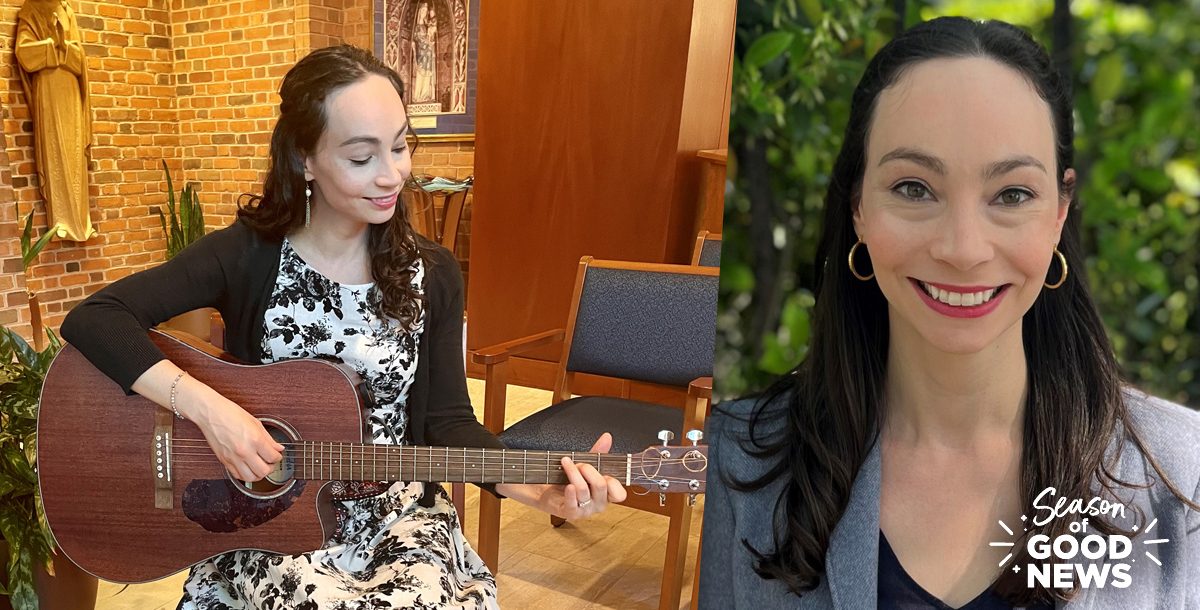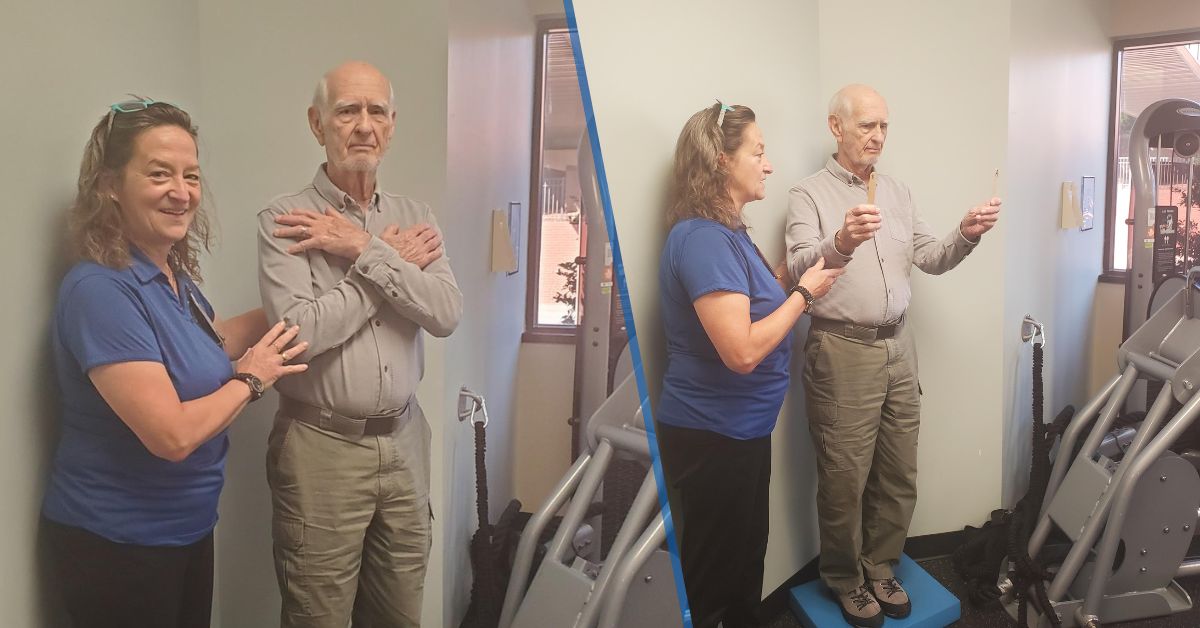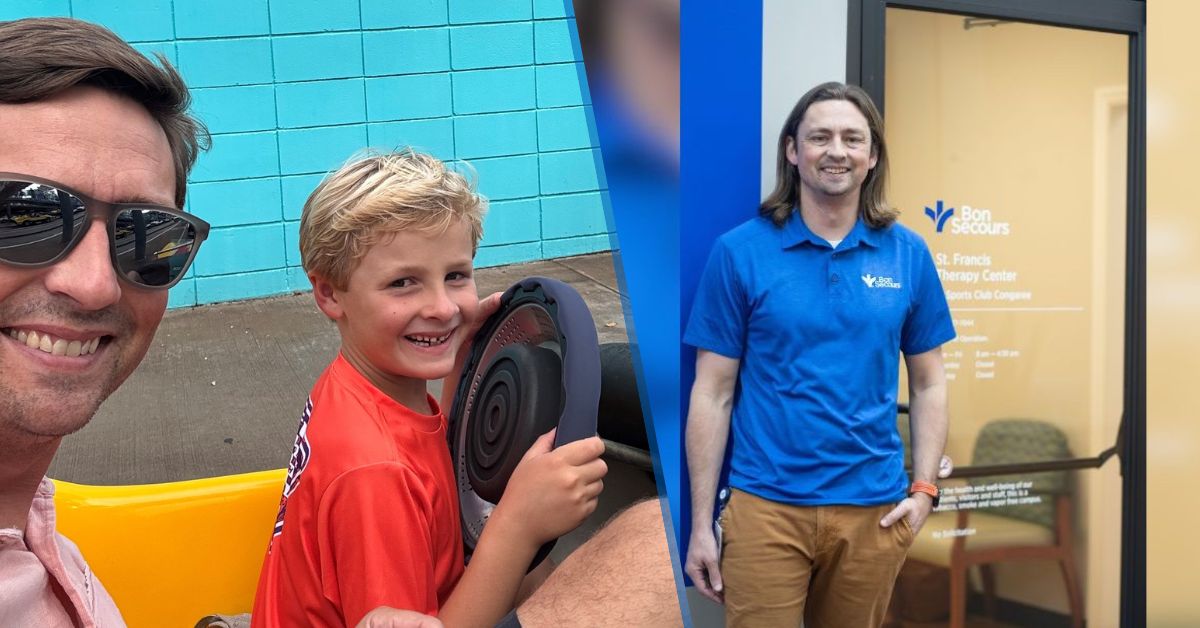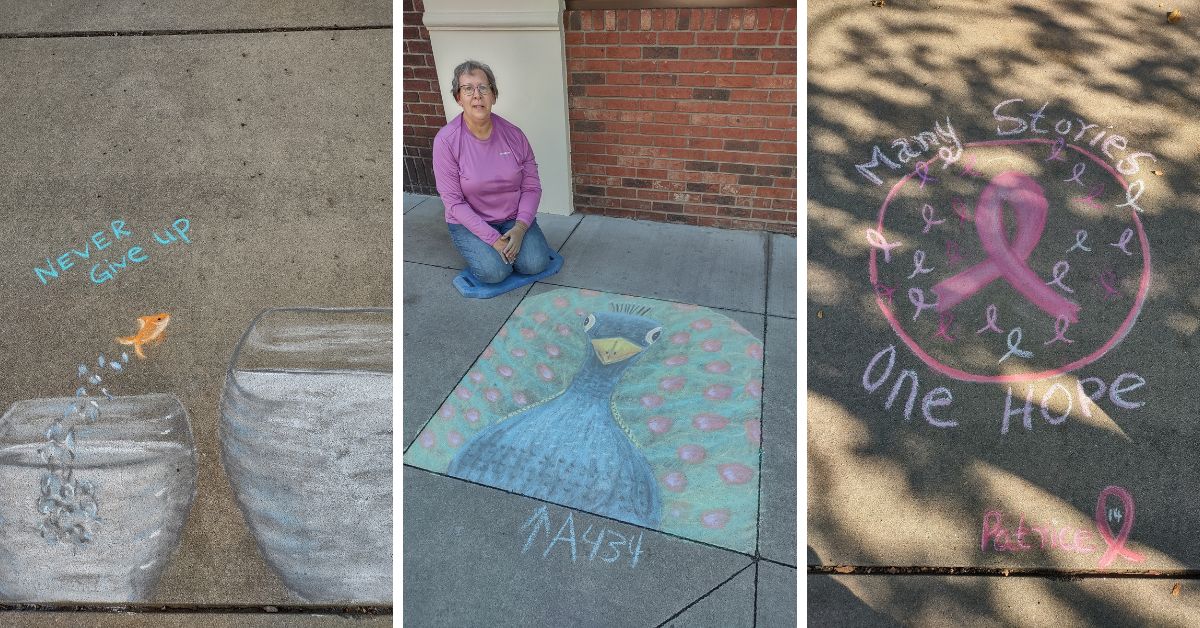For some people, the power of music goes a long way.
In fact, music therapy is a board-certified health profession that uses evidence-based music experiences within the context of a therapeutic relationship to help patients reach their health and wellness goals.
Meet Stephanie Surber (pictured above), a board-certified music therapist and music therapy clinical supervisor. She works at Bon Secours St. Mary’s Hospital with our spiritual care services team.
On a rainy day in the fall, Stephanie received a music therapy consult for an 80-year-old man with Parkinson’s disease and an abdominal aortic aneurysm rupture. He was lying in bed, alert and with confusion at times. His two daughters were at bedside.
After asking how the patient was feeling, Stephanie asked about the patient’s music background and music preferences, which his daughters shared, to guide her song selection during the session. The patient suddenly appeared agitated and grabbed his bedsheet, holding it tightly.
“I left my guitar in its case to offer support more quickly and softly sang the hymn ‘Just a Closer Walk with Thee,’” she says. “I gently tapped the beat of the song on the patient’s hand that was holding the blanket. Halfway through the song the patient released the bedsheet and engaged in eye contact with me for the first time, which his daughters were pleased to see.”
Stephanie continued with the hymn “How Great Thou Art” and then “God Bless America.” He maintained eye contact with her and sang along to parts of the first song, and then sang more clearly and loudly along to the next.
“His daughters were joyfully tearful in these moments, and they expressed enjoyment in the music,” she says. “The patient held my hand throughout the session, and during the final song, the patient gently squeezed my hand to the beat. His daughters shared that this was the most response they’d seen from the patient all day and expressed much gratitude for him receiving music therapy. He even mouthed ‘thank you’ to me.
She adds that her experience has been that music disarms and creates a safe space for people to openly share and explore their struggles, their hopes and what gives them meaning.
“For me, connecting with people through music is a lifelong dream come true,” she said.
Stephanie was also kind enough to sit down with us for a Q&A and talk about all thing music therapy. Read her thoughtful comments below.
Q: How is music therapy used at St. Mary’s Hospital?
Stephanie: Music therapists are a part of the interdisciplinary care team at St. Mary’s Hospital where doctors, nurses, chaplains, social workers and others make music therapy consults for their patients. In coordination with the team, evidence-based music experiences are provided to accomplish individualized care plan goals within a therapeutic relationship between a credentialed music therapist and a patient and/or their loved ones.
Some music therapy experiences are interactive, such as songwriting with a patient to support a goal of emotional support through self-expression. Others are receptive, such as the music therapist providing a music-accompanied relaxation experience in pursuit of a stress reduction goal.
I work with patients of all ages, from our pediatric units to 100-year-olds. For our NICU babies, due to how vulnerable they are, an advanced music therapy certification is recommended for working with this group so the music therapist can confidently apply music therapy protocols and experiences that help babies and their families thrive. The National Institute for Infant & Child Medical Music Therapy provides this advanced training, which consists of a classroom educational component, fieldwork, readings and a final exam.
Q: What benefits does music therapy bring to a patient?
Stephanie: Studies show that when we experience music, our brains and bodies have an increase of endorphins, a neurotransmitter that relieves pain, and a decrease of cortisol, a stress response hormone.
During a music experience, our bodies release the neurotransmitters dopamine, which is a feel-good hormone, serotonin, which is a comfort hormone, and oxytocin, which is a social bonding hormone. There aren’t many things that release all these neurotransmitters at once. Most things we do or that happen to us cause the release of one or two of these, but music results in all three being released. This is the physiological reason music has a powerful effect on things like our healing and ability to connect with others.
Q: Describe times when you saw patients benefit from music therapy?
Stephanie: With my patients, I’ve seen music therapy measurably improve heart and respiration rates, alleviate pain and nausea and observed patients’ anxiety decrease prior to surgery. I’ve observed patients have cathartic experiences in the safety of our therapeutic relationship and in direct response to the music provided, agitated patients calmed, withdrawn patients become engaged and animated, and COVID-19 patient’s loneliness staved off. I’ve helped parents and caregivers write personalized lullabies for their baby in the NICU and assisted end-of-life patients with writing and recording a song to their loved ones as a legacy project, and so much more.
Q: Can you describe a typical music therapy session?
Stephanie: I start with a comprehensive assessment of the patient’s medical, social and cultural background before and during an initial session. This includes asking a patient about their music preferences and music background.
Based upon the assessed goal, I develop a treatment plan. I most often use live music, which can include singing, playing guitar and/or percussion instruments, instead of recorded music because I can make ongoing adjustments to the volume, tempo and other qualities of the music depending on the patient’s response to it. All sessions aim to meet the care plan goal while supporting holistic care for our patients and their visiting loved ones in the hospital.
Finally, I document each session in the patient’s medical record to track both progress toward the care plan goal and overall effectiveness data.
Q: Is there anything else you’d like to add about music therapy?
Stephanie: A common misconception about music therapy is that a musician comes into a patient’s room to sing a few songs and make them smile. In actuality, music therapists work with the patient’s care team to improve health outcomes for patients, similar to how a physical therapist does but using evidence-based music experiences as our tool.
I’m privileged to have a career that allows me to create music to connect with others, support their healing and honor their dignity. Music therapy couldn’t be more aligned with our ministry’s Mission and I’m grateful to work for leadership and an organization that values this.
Q: If someone wants to advocate for music therapy for their loved one or for themselves at St. Mary’s Hospital, how can they go about this?
Stephanie: The most direct way is to call the Chaplains’ office at 804-281-8393 and leave a message requesting music therapy with their name or their loved one’s name and room number. They can also let any member of their care team know they want music therapy, including their doctor, nurse, chaplain, case manager and they’ll be able to place a consult for music therapy.
This holiday season, we are celebrating by spreading the good news! Read more feel-good stories, like this one, that feature our team members, patients and the wonderful communities we are blessed to serve.
Also, learn about the health care services we offer at Bon Secours.





